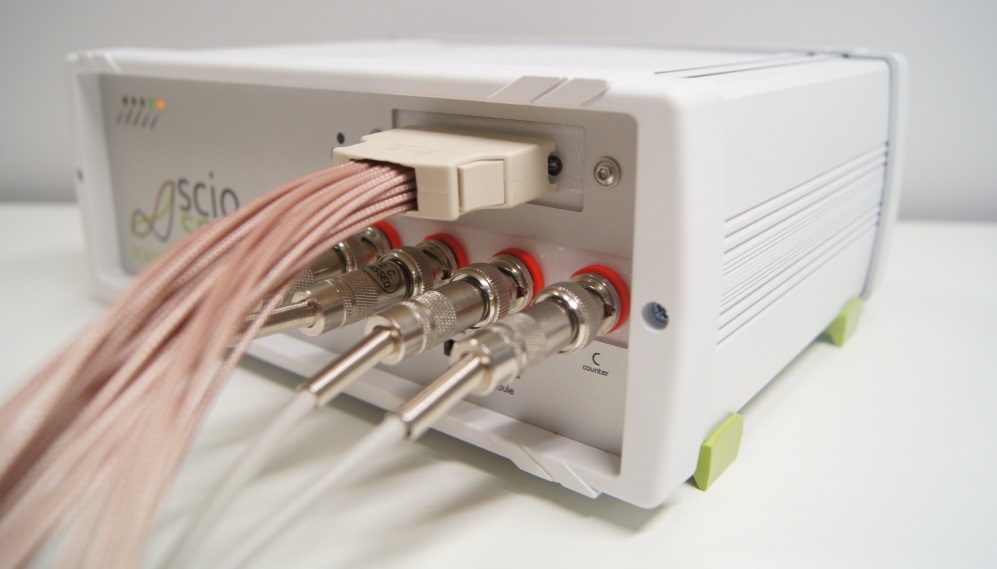
Both, impedance analysers and LCR meters are instruments for performing electrical measurements. LCR meters’ purpose is the characterization of electrical components in terms of their inductance, resistance and capacitance or other equivalent circuit models. Impedance analyzers’ scope is a lot broader than that. Measuring the complex impedance over a broad range of frequencies they can be used for all kinds of applications where determining electrical properties is crucial – e.g. material science, medical, bioanalytical, etc. However, when it comes to characterizing electrical components both impedance analyzers and LCR meters can be a valid choice. Not always an easy choice, as with highly capable modern instruments the lines sometimes get blurred.
So, let’s look at some of the key things to look out for when comparing these two instrument classes.

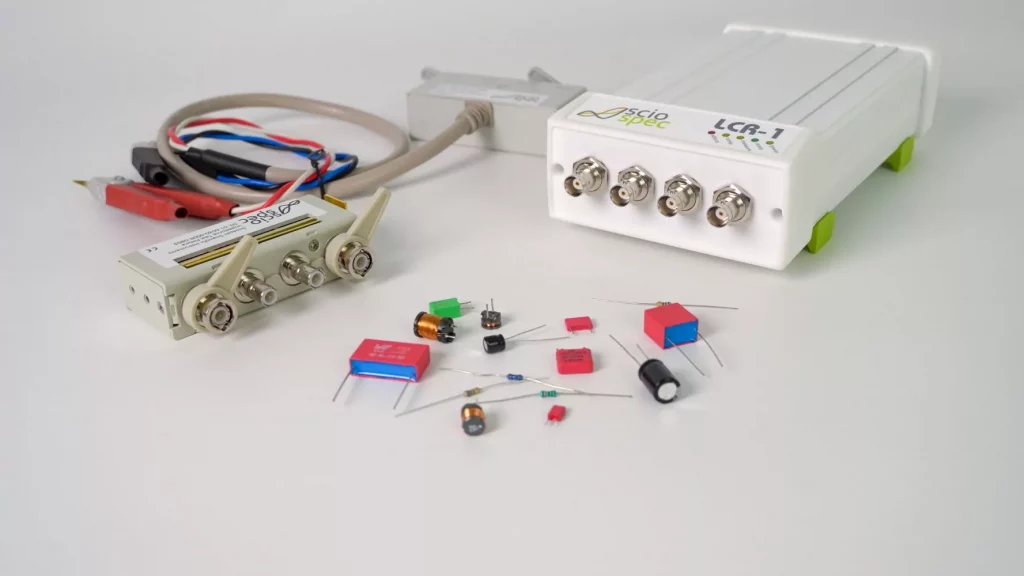
LCR meters are specifically intended for determining equivalent circuit model parameters of electrical components – in the simplest cases that would be inductance (L), capacitance (C), and resistance (R), hence the name LCR meter. A lot of LCR meters also offer to show the complex impedance itself – as real and imaginary or absolute value and phase. Most often though, equivalent circuit models matching the task at hand are investigated, for example simple series or parallel circuits of RC or LC combinations and more refined models targeting specific component types. This type of measurement is essential in component testing for end of line production testing, electronic assembly processes and during the component or circuit development. Consequently, the most common places to find LCR meters are electronic workshops or production environments. The classical LCR meter uses a measurement methodology called a bridge method, which is basically comparing an object under test to references. These instruments are still very commonly found today. This approach results in a very narrow field of good measurement accuracy around those reference objects and typically it works particularly well at a specific frequency. Traditionally LCR meters would thus be used at a single frequency.
Impedance analyzers on the other hand typically are built for a broad range of frequencies and a very large range of impedances. While there are exceptions to this, most modern impedance analyzers use a methodology called complex current-voltage (I/V) method, applying a swept frequency AC signal and observing the ration between current and voltage in the measurement object. This yields enormous ranges both in frequency and impedance. The best way to look at this difference is comparing the accuracy-contour plots of a classical LCR meter with that of an impedance analyzer. The segmentation of the Hameg HM8118 plot nicely shows the effect of a bridge method approach vs the I/V topology as seen in the Sciospec ISX-3. On top of that the impedance analyzer demonstrates much broader range of impedance and frequency typical for this instrument class.
So, when comparing a traditional bridge method LCR meter with an impedance analyzer, the LCR meter will typically fall short in terms of measurement ranges. However, some of the new generation of LCR meters use a more generalized complex current-voltage (I/V) method yielding similar frequency spans and dynamic measurement ranges as full-blown impedance analyzers. A nice example thereof is the Sciospec LCR-1 LCR meter. It´s accuracy contour plot is close to identical to that of an ISX-3 impedance analyzer as they are both built on the same measurement platform.
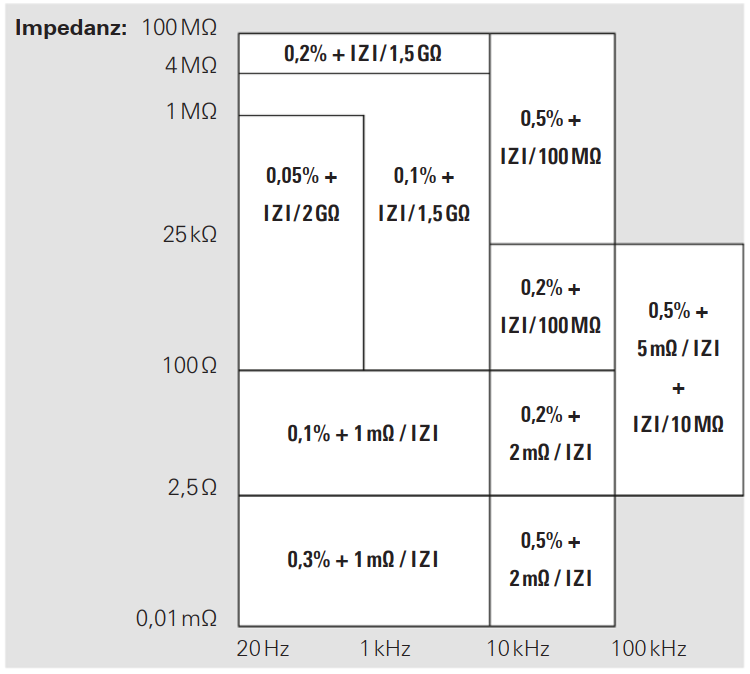
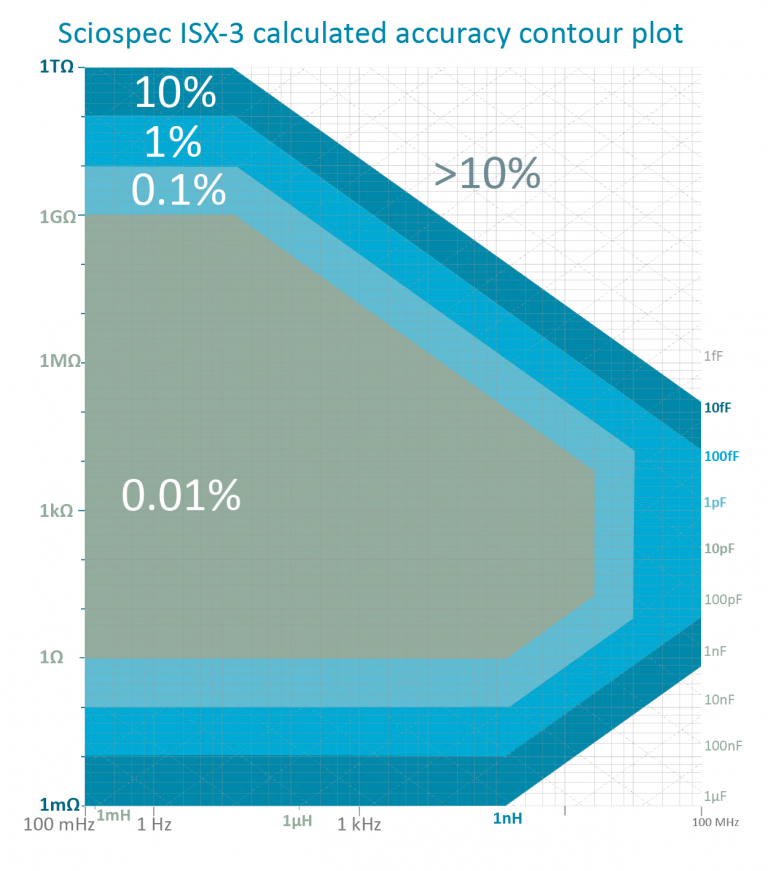
When it comes to features the story is similar to that of technical capabilities. A typical LCR meter is highly adapted to measuring electrical components and brings exactly the feature set this job requires. With the user interface targeted at the rather specific use case, determining a component’s key properties is a very simple task. While traditional LCR meters like the Hameg HM8118 give the user complete control from push button frontpanel controls (bottom image), more modern interpretations of LCR meters use graphical interfaces as shown for example in the Sciospec LCR-1 (top image). Both approaches give access to the most important controls for selecting an equivalent model and getting this measurement done with as little detail knowledge as possible.
More advanced instruments like the LCR-1 will also have more refined measurement modes like time tracing changes in the model parameters or pass-fail testing including statistical testing for component batches. Some will even offer multi-frequency sweeps getting closer to what an impedance analyzer would deliver. However, in essence this all caters to seeing an electrical component’s essential parameters.
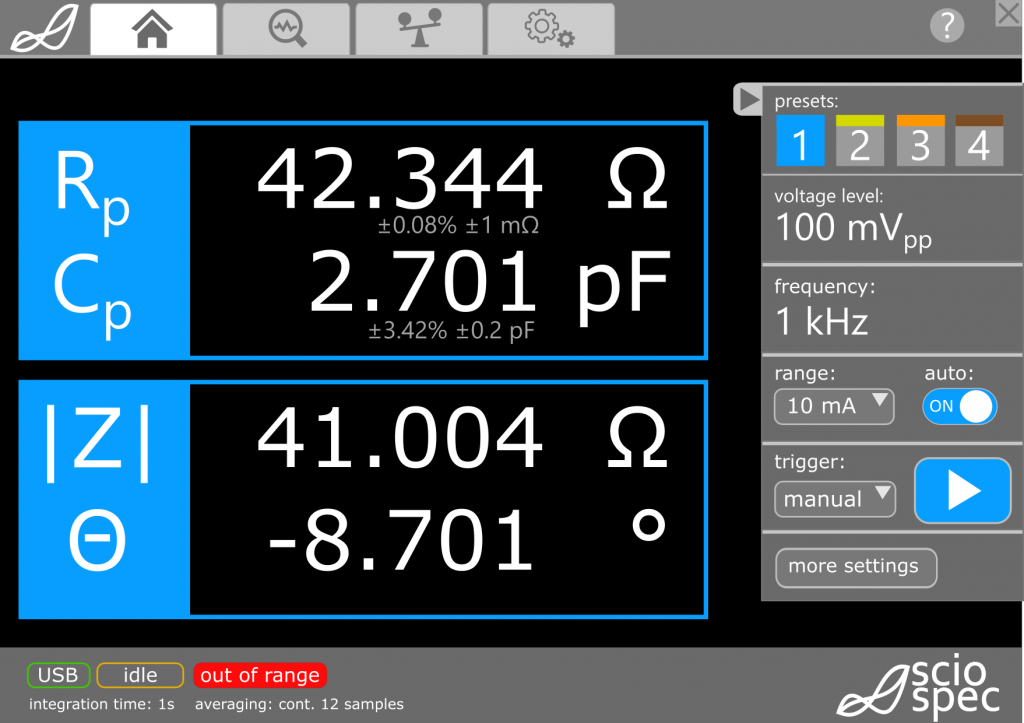
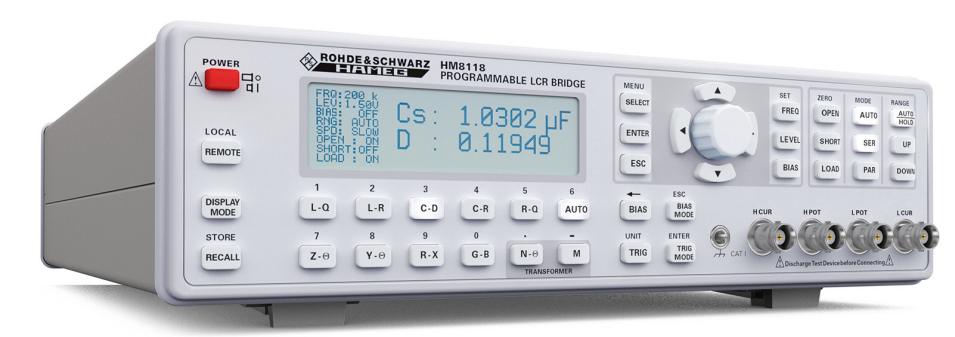
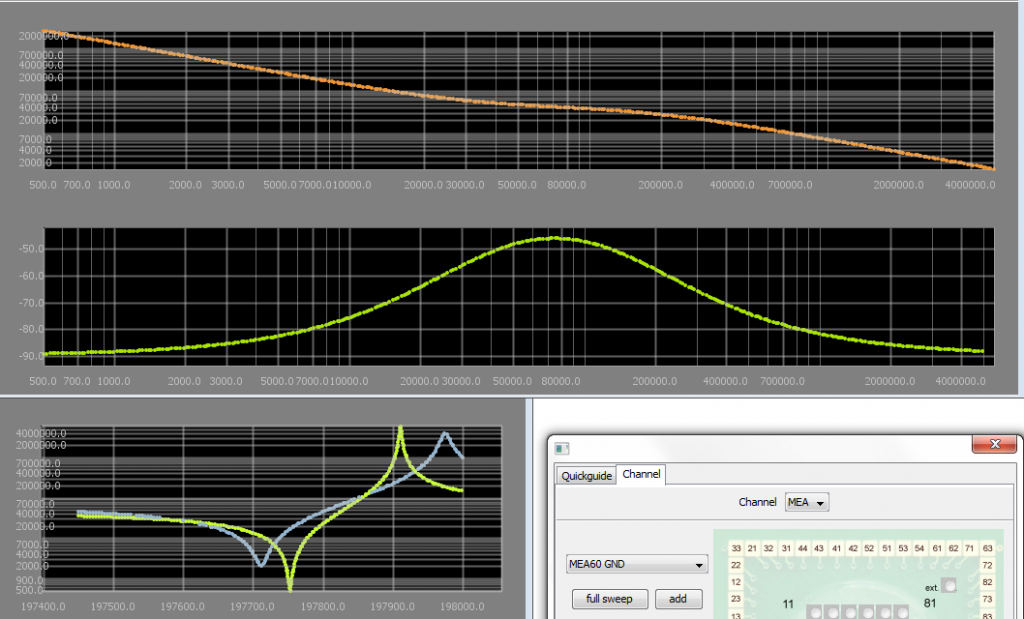
Impedance analyzers on the other hand will typically offer a
much broader range of features targeted at gaining detailed insights into the frequency dependent behaviour of electrical properties. Their main purpose is to acquire frequency dependent complex impedance spectra.
As we already mentioned some of the modern high end LCR meters also offer frequency sweeps, but impedance analyzers usually are a lot better at this, most notably in terms of speed. Added features like phase synchronous switching also offer a lot more capabilities in regard to measurements of resonant phenomena and other more challenging setup types.
Naturally this results in more comprehensive set of controls for performing measurements. While there are some more traditional form factor instruments using frontpanel controls for this, a lot of the modern impedance analyzers nowadays opt for a purely software based user interface.
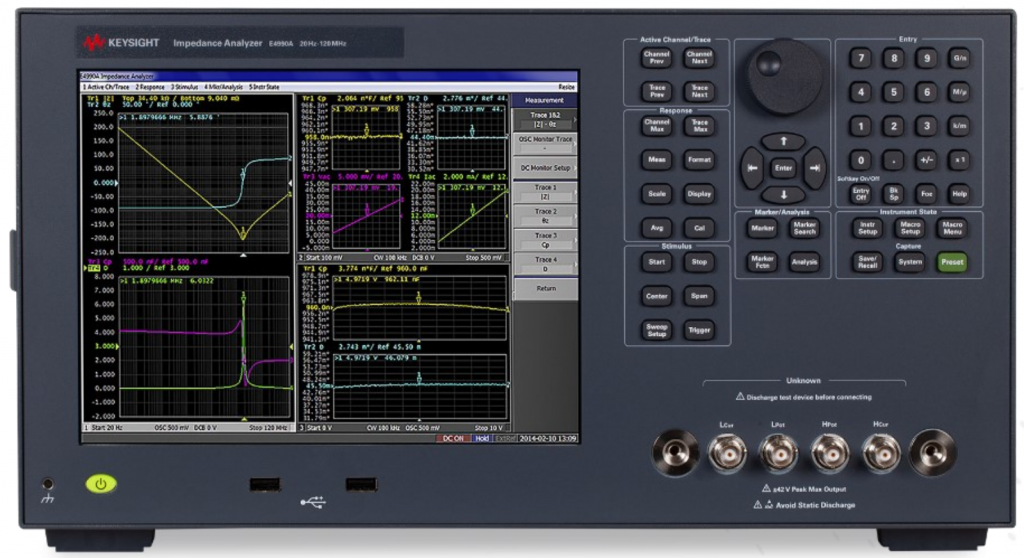
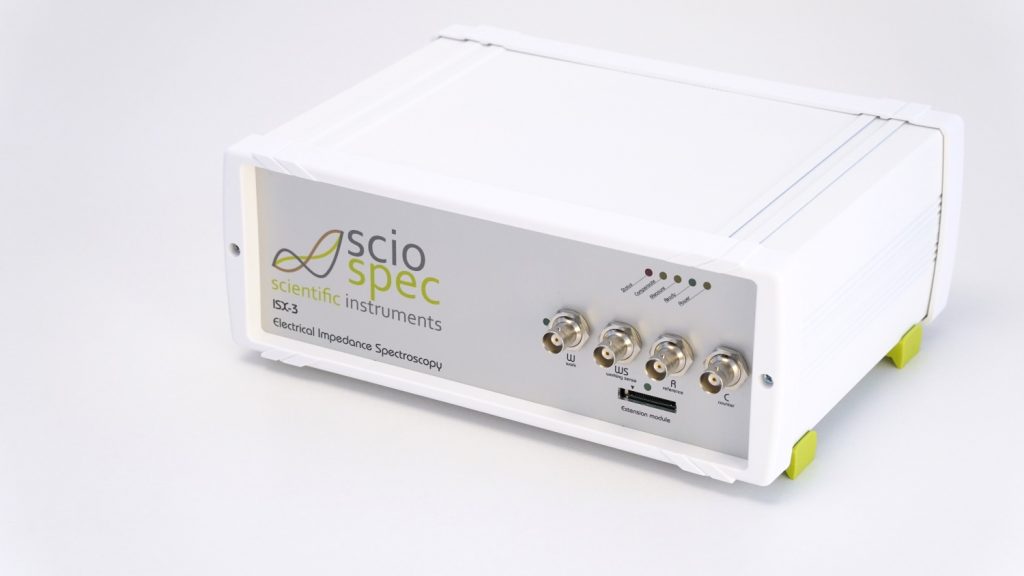
Having the broader range of measurement capabilities impedance analyzers can easily yield the necessary data for classical LCR meter measurements, usually surpassing them in terms of range, speed and accuracy. Thus, some modern impedance analyzers will also cover the feature set of an LCR meter by adding a dedicated LCR “mode” or “view” in their user interface. With this the impedance analyzer completely covers all LCR meter functionality and offers the user many ways to go beyond these if required.
The screenshots taken from the Sciospec ISX-3’s software user interface demonstrate this nicely. While the top image shows a view in the standard impedance spectroscopy mode with a lot of detailed controls, the bottom image is taken from the integrated LCR measurement mode and showcases the same simplicity as found in LCR meter user interfaces.
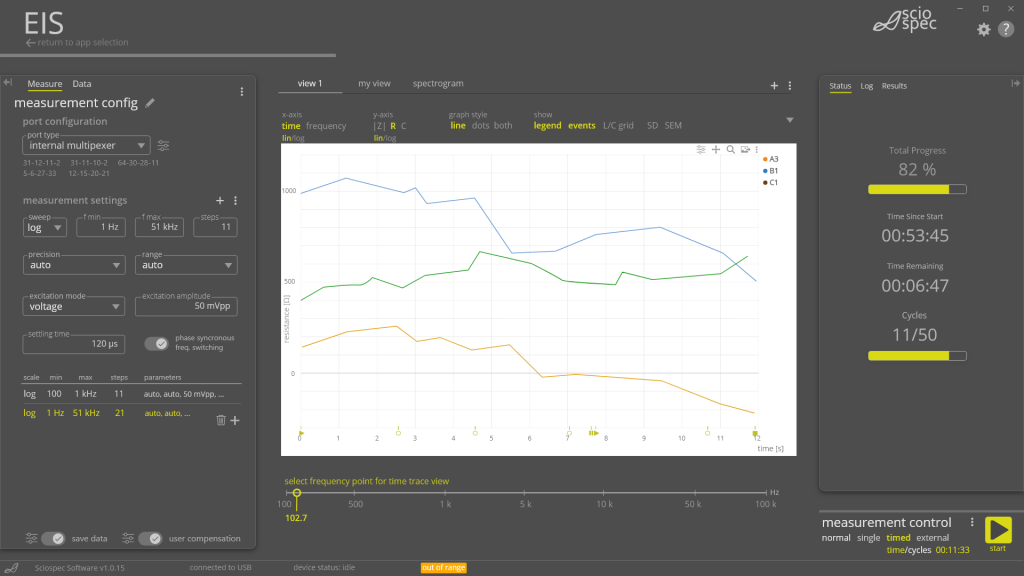
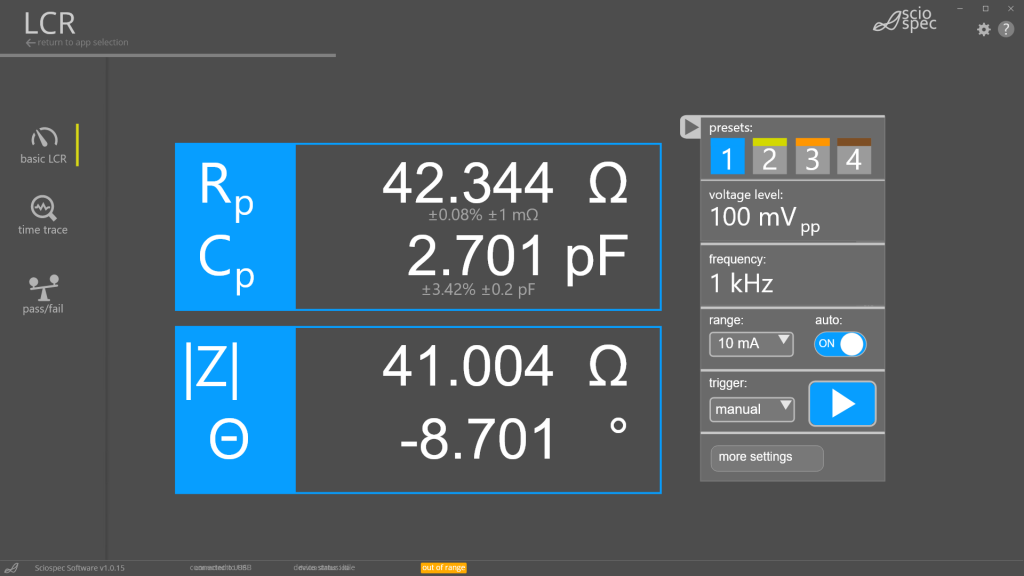
In summary, while impedance analyzers and LCR meters both measure electrical components’ impedance, they differ in their measurement range, frequency capabilities, complexity, application focus, and cost. The choice between them depends on the specific requirements of the measurement task, the level of detail needed, and the available budget. Put simply: If you are looking for the simplest possible way to determine the key parameters of an electrical component an LCR meter might be the best tool for you. If however you need to gain insights into electrical properties, perform frequency dependant analysis or any type of more sophisticated investigation, an impedance analyzer will be the better fit.
Modern and advanced LCR meters like the Sciospec LCR-1 blur the lines between these instrument classes keeping the LCR meter typical easy to use component test focus but delivering impedance analyzer grade performance. At the same time, modern impedance analyzers like the Sciospec ISX-3 make LCR measurements available as part of their feature set but offer a comprehensive set of capabilities to go far beyond LCR meters.
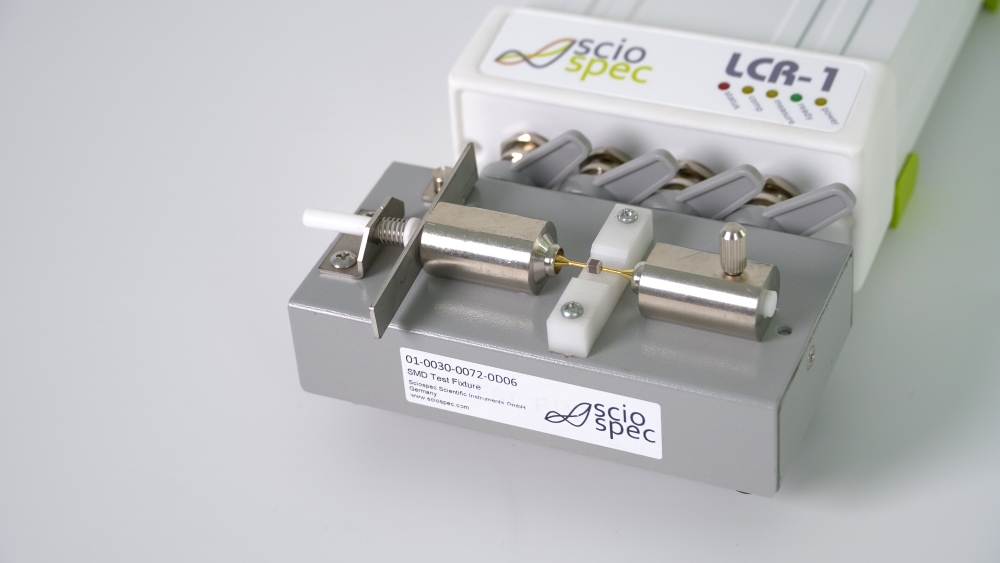
LCR meter | Impedance analyzer | |
Measurement range | Narrow, targeted at typical electrical component parameters | very broad coverage of both frequency and impedance range |
Frequency sweep | intended for single frequency measurements with more advanced instruments offering limited sweep capabilities | built for multi frequency analysis covering fast high-resolution spectroscopic measurements |
Features | Simple and small feature set targeted at component parameter measurement | Large set of features for all sorts of electrical characterization including that of LCR measurements |
Applications | Component testing in production and electronic assembly | Quantifying electrical properties in all application areas from component testing, over biosensing, material science and many more |
Cost | Lower when compared to impedance analyzers with some very affordable entry level instruments available | Higher when compared to LCR meters |
Acquisition speed | Slow, especially for multi frequency sweeps | fast |
For a more detailed treatment of each instrument class check out our respective overview pages for impedance analyzers and LCR meters.